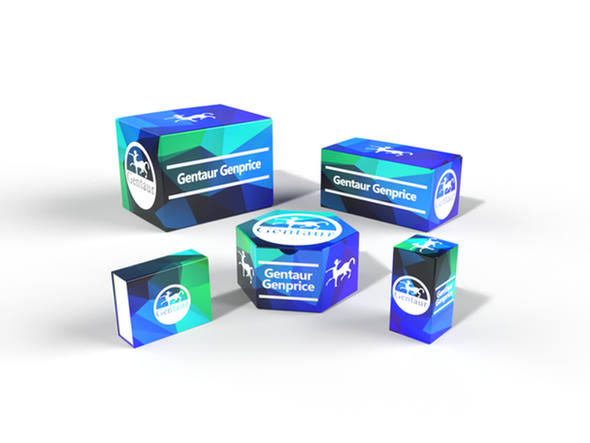740
Rat Cyclic adenosine monophosphate (cAMP) ELISA Kit | AE61565RA
- SKU:
- 740-AE61565RA
- Availability:
- Usually ships in 5 working days
Description
Rat Cyclic adenosine monophosphate (cAMP) ELISA Kit | AE61565RA | Gentaur UK, US & Europe Distribution
Species Reactivity: Rat (Rattus norvegicus)
Abbreviation: cAMP
Alternative Name: N/A
Application: ELISA
Range: 246.9-20000 pg/mL
Sensitivity: 92.5 pg/mL
Intra-Assay: ≤3.6%
Inter-Assay: ≤7.7%
Recovery: 1
Sample Type: Serum, Plasma, Other biological fluids
Detection Method: Sandwich
Analysis Method : Quantitive
Test Principale: This assay employs a two-site sandwich ELISA to quantitate cAMP in samples. An antibody specific for cAMP has been pre-coated onto a microplate. Standards and samples are pipetted into the wells and anycAMP present is bound by the immobilized antibody. After removing any unbound substances, a biotin-conjugated antibody specific for cAMP is added to the wells. After washing, Streptavidin conjugated Horseradish Peroxidase (HRP) is added to the wells. Following a wash to remove any unbound avidin-enzyme reagent, a substrate solution is added to the wells and color develops in proportion to the amount of cAMP bound in the initial step. The color development is stopped and the intensity of the color is measured.
Product Overview: Cyclic adenosine monophosphate is a second messenger important in many biological processes. cAMP is derived from adenosine triphosphate (ATP) and used for intracellular signal transduction in many different organisms, conveying the cAMP-dependent pathway. cAMP is synthesised from ATP by adenylyl cyclase located at the cell membranes.Adenylyl cyclase is activated by a range of signaling molecules through the activation of adenylyl cyclase stimulatory G (Gs) -coupled receptors and inhibited by agonists of adenylyl cyclase inhibitory G (Gi) -protein-coupled receptors. Liver adenylyl cyclase responds more strongly to glucagon, and muscle adenylyl cyclase responds more strongly to adrenaline. cAMP is a second messenger, used for intracellular signal transduction, such as transferring the effects of hormones like glucagon and adrenaline, which cannot pass through the cell membrane.
Stability: The stability of ELISA kit is determined by the loss rate of activity. The loss rate of this kit is less than 5% within the expiration date under appropriate storage condition. The loss rate was determined by accelerated thermal degradation test. Keep the kit at 37°C for 4 and 7 days, and compare O.D.values of the kit kept at 37°C with that of at recommended temperature. (referring from China Biological Products Standard, which was calculated by the Arrhenius equation. For ELISA kit, 4 days storage at 37°C can be considered as 6 months at 2 - 8°C, which means 7 days at 37°C equaling 12 months at 2 - 8°C) .










